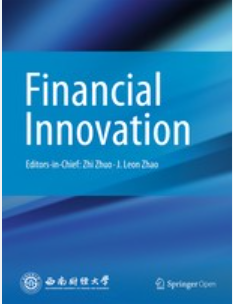COVID-19 危机期间不同资产类型和极端风险传播的特点
IF 7.2
1区 经济学
Q1 BUSINESS, FINANCE
引用次数: 0
摘要
目前大量文献都在讨论哪些资产可以规避 COVID-19 大流行带来的风险,与此不同的是,本研究探讨了不同资产的特征是否会影响 COVID-19 危机的极端风险传递。本研究探讨了 COVID-19 大流行相关风险因素(即大流行严重程度、大流行法规和政策以及疫苗接种相关变量)对八种资产收益极端波动风险的影响。这八种资产属于以下类别:虚拟资产、金融资产、能源资产、商品资产和实物资产。为了考虑 COVID-19 可能产生的不同方面的影响,本研究分别采用了两种实证方法,将与大流行病相关的变量视为外生冲击和内生因素。利用这些方法,本研究得以系统分析不同类型资产的特征与 COVID-19 危机期间极端风险传播影响之间的关系。结果显示,不同类型的资产市场受到不同风险因素的影响。虚拟资产和商品资产没有表现出 COVID-19 大流行所诱发的极端波动。包括原油在内的能源市场受大流行病严重程度的负面影响最大,在大流行病初期不利于投资。然而,在疫苗接种和大流行法规控制了感染传播后,能源市场的复苏使其更有利于投资。此外,本研究还解释了比特币和黄金对冲特性的差异。本研究的结论有助于投资者在面临不同冲击时系统地选择资产类型。本文章由计算机程序翻译,如有差异,请以英文原文为准。
Features of different asset types and extreme risk transmission during the COVID-19 crisis
Unlike the current extensive literature, which discusses which assets can avoid the risks caused by the COVID-19 pandemic, this study examines whether the characteristics of different assets affect the extreme risk transmission of the COVID-19 crisis. This study explores the effects of COVID-19 pandemic–related risk factors (i.e., pandemic severity, pandemic regulations and policies, and vaccination-related variables) on the risk of extreme volatility in asset returns across eight assets. These eight assets belong to the following classes: virtual, financial, energy, commodities, and real assets. To consider the different possible aspects of the COVID-19 impact, this study adopts both empirical methods separately, considering variables related to the pandemic as exogenous shocks and endogenous factors. Using these methods, this study enabled a systematic analysis of the relationship between the features of different asset types and the effects of extreme risk transmission during the COVID-19 crisis. The results show that different types of asset markets are affected by different risk factors. Virtual and commodity assets do not exhibit extreme volatility induced by the COVID-19 pandemic. The energy market, including crude oil, is most affected by the negative impact of the severity of the pandemic, which is unfavorable for investment at the beginning of the pandemic. However, after vaccinations and pandemic regulations controlled the spread of infection, the recovery of the energy market made it more conducive to investment. In addition, this study explains the differences between the hedging characteristics of Bitcoin and gold. The findings of this study can help investors choose asset types systematically when faced with different shocks.
求助全文
通过发布文献求助,成功后即可免费获取论文全文。
去求助
来源期刊

Financial Innovation
Economics, Econometrics and Finance-Finance
CiteScore
11.40
自引率
11.90%
发文量
95
审稿时长
5 weeks
期刊介绍:
Financial Innovation (FIN), a Springer OA journal sponsored by Southwestern University of Finance and Economics, serves as a global academic platform for sharing research findings in all aspects of financial innovation during the electronic business era. It facilitates interactions among researchers, policymakers, and practitioners, focusing on new financial instruments, technologies, markets, and institutions. Emphasizing emerging financial products enabled by disruptive technologies, FIN publishes high-quality academic and practical papers. The journal is peer-reviewed, indexed in SSCI, Scopus, Google Scholar, CNKI, CQVIP, and more.
 求助内容:
求助内容: 应助结果提醒方式:
应助结果提醒方式:


